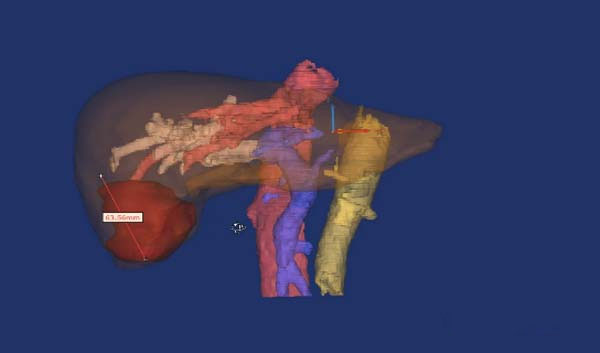Hunan Provincial Cancer Hospital removes primary liver cancer with 3D printed guides
Cut and cut is not clean, cut too much and is afraid of affecting metabolic function. In the past, primary liver cancer surgery has such a dilemma. Recently, the Department of Hepatobiliary Surgery of Hunan Cancer Hospital used 3D printing technology to design a 3D model-guided hepatic resection guide—3D printed liver cutting plate. In just two hours, the table tennis-sized tumor on the liver was perfectly removed. The amount of bleeding is only 100ml, and the dilemma is successfully solved. At present, the 3D printing liver cutting plate technology has successfully applied for a patent.
The dilemma of patients with cirrhosis of primary liver cancer is more obvious
China is a high-incidence area of ​​primary liver cancer, and nearly 50% of new cases of liver cancer occur in China every year. Hepatitis B and hepatitis C virus infection are the most common risk factors for primary liver cancer in China. Studies have shown that in China, about 90% of patients with primary liver cancer have a background of hepatitis virus infection; about 60% of them have different degrees of cirrhosis.
The compensatory capacity of normal liver is quite powerful. It is considered to be quite safe to remove about 70% of the liver. The remaining 30% of the liver can meet the metabolic needs of the body. For patients with cirrhosis, the liver function reserve is greatly reduced. Therefore, there is such a contradiction in the surgical treatment of primary liver cancer: on the one hand, doctors hope to expand the scope of resection, complete resection of liver tumors and proximity On the other hand, doctors also hope to retain normal liver tissue as much as possible to facilitate postoperative recovery and reduce the risk of liver failure.

Studies have shown that when the surgical margin of primary liver cancer reaches 1cm, the probability of negative margin is about 90%, and when the margin is 2cm, the negative margin is close to 100%. However, because it is difficult to determine the distance between the margin and the tumor on the surface of the liver, it is usually judged by the surgeon's experience in the operation. Such judgments often have certain deviations, especially for tumors located deep in the liver parenchyma. In the operation of the tumor and the location of the tumor, intraoperative B-ultrasound as a two-dimensional imaging examination, it is difficult to provide accurate pre-cutting line, therefore, patients often find a small lesion infiltration in the liver cutting edge in the postoperative pathological examination, and Blind expansion of the scope of surgery may lead to serious consequences of liver failure after surgery.
Active Pharmaceutical Ingredients
Active Pharmaceutical Ingredients(API) refer to the raw materials used in the production of various preparations. They are the effective ingredients in the preparations. They are various powders, crystals, extracts, etc., prepared by chemical synthesis, plant extraction or biotechnology, but Substances that the patient cannot take directly. API is intended to be used in any substance or mixture of substances in the manufacture of pharmaceuticals, and when used in pharmaceuticals, it becomes an active ingredient of the pharmaceuticals. Such substances have pharmacological activity or other direct effects in the diagnosis, treatment, symptom relief, treatment or prevention of diseases, or can affect the function or structure of the body. According to its source, active pharmaceutical ingredients are divided into two categories: synthetic chemical active Pharmaceutical ingredients and natural chemical active Pharmaceutical ingredients.
Chromium Picolinate,Tianeptine,6-Paradol,Aminobutyric acid,acetylcysteine,L-Carnosine
Xi'an Gawen Biotechnology Co., Ltd , https://www.ahualynbios.com